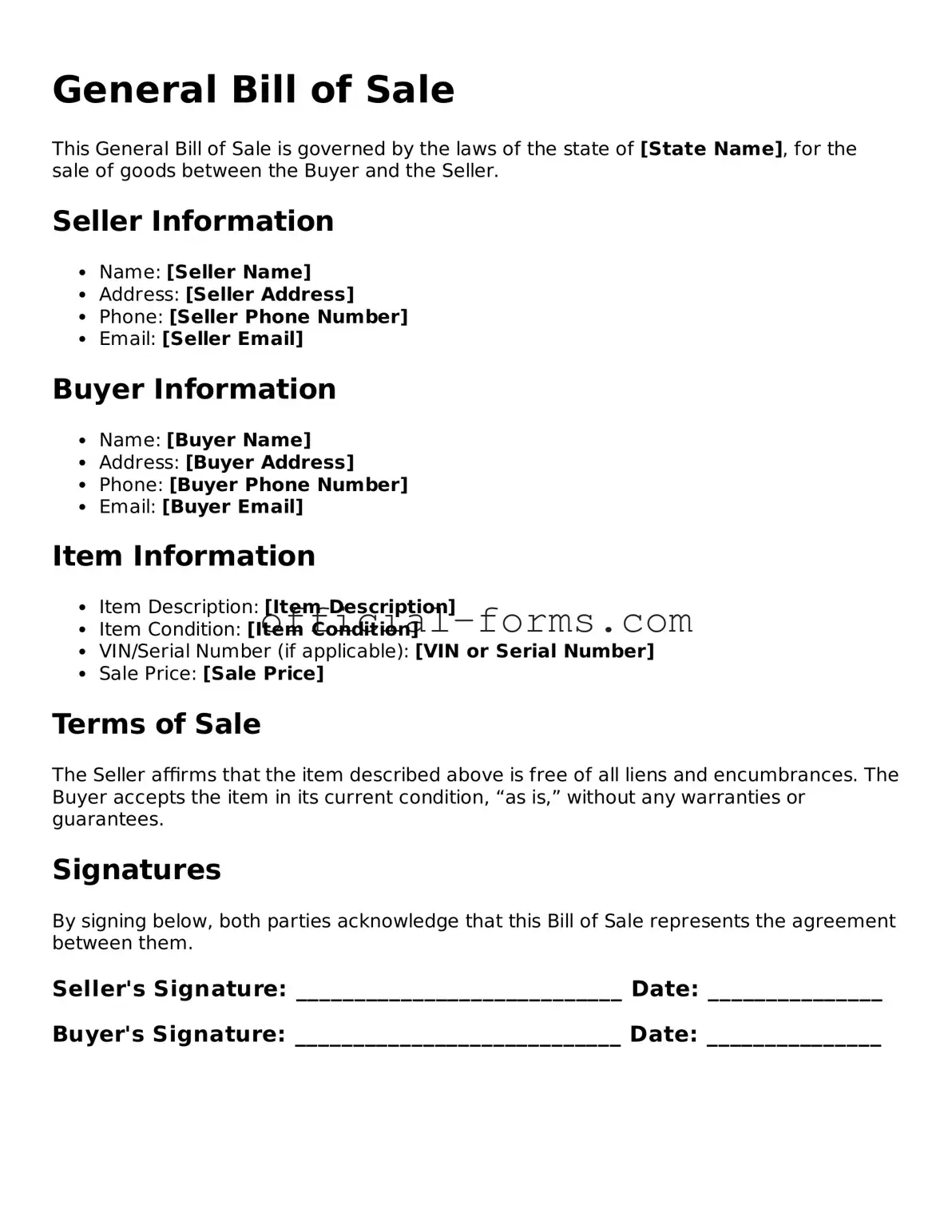Filling out a General Bill of Sale form can be straightforward, but several common mistakes often occur. One frequent error is not providing complete information about the item being sold. This includes details such as the make, model, year, and condition. Omitting any of these details can lead to confusion or disputes later on.
Another mistake is failing to include accurate personal information. Both the seller and buyer must provide their full names and addresses. Incomplete or incorrect information can create problems in the event of a dispute or if the buyer needs to register the item.
Some individuals forget to specify the sale price. Leaving this section blank or writing an ambiguous amount can lead to misunderstandings. It is essential to clearly state the agreed-upon price to ensure both parties are on the same page.
Additionally, people sometimes neglect to date the document. A Bill of Sale should include the date of the transaction. Without a date, it can be difficult to establish when the sale took place, which may be important for tax purposes or in the event of a legal issue.
Another common oversight is not signing the form. Both parties must sign the Bill of Sale to validate the transaction. A lack of signatures could render the document ineffective and may not hold up in a legal setting.
Some sellers may also forget to provide a warranty or disclaimer. If there are any specific conditions regarding the sale, such as whether the item is sold "as is," these should be clearly stated. This helps protect both the seller and the buyer from potential disputes.
Lastly, individuals sometimes fail to keep a copy of the completed Bill of Sale. After signing, both parties should retain a copy for their records. This document serves as proof of the transaction and may be needed for future reference.
